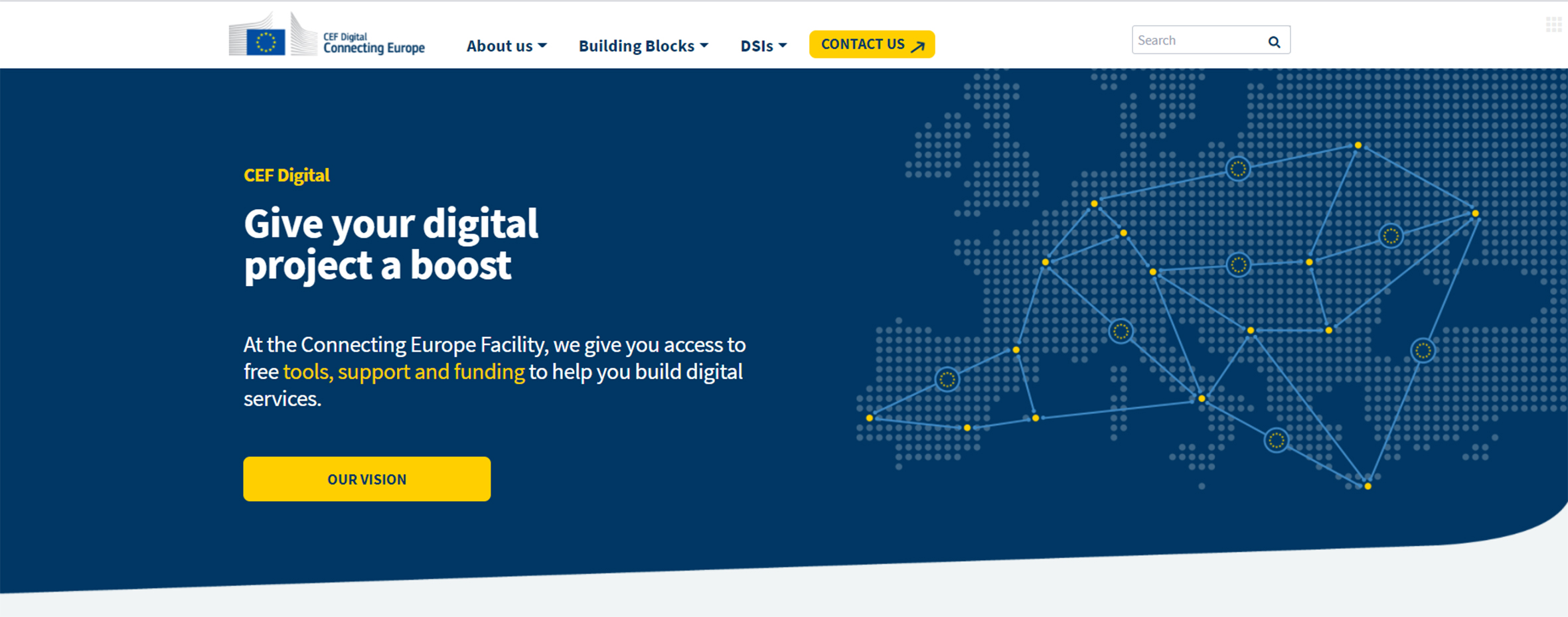REBUILD and the five "sister" projects funded under the Horizon 2020 programme, MIICT, NADINE, MICADO, EASYRIGHTS and WELCOME, are tackling the challenge of how to better integrate migrants in European societies using ICT solutions. In October 2020, they organised, in cooperation with the European Commission, Joint Migration Policy Roundtables to try and answer this question.
The result was a policy whitepaper giving strategic input to help shape the future of migration policy in the EU, focusing on ICT-enabled solutions. Broadly speaking, digitalisation of public services related to migration will improve the effectiveness and accessibility of such services, easing the integration of migrants into their host societies.
But what particular challenges do migrants face, and how can digital solutions help?
An article published at CEF Digital website, explain the Joint Migration Policy Whitepaper’s new approach, and especially how the Connecting Europe Facility (CEF) Building Blocks could help address the issues raised in the whitepaper.
Let us first understand what is a CEF Building Block
The Connecting Europe Facility (CEF) Building Blocks are open, reusable digital solutions. They can take the shape of a framework, software, or a software as a service (SaaS), or any combination thereof.
Building Blocks are endorsed by the European Commission and ensure that any digital service provided as a research result will be fully compatible with other on the market. The CEF building blocks offer basic capabilities that can be used in any European project to facilitate the delivery of digital public services across borders.
The aim of the building blocks is thus to ensure interoperability between IT systems so that citizens, businesses and administrations can benefit from seamless digital public services wherever they may be in Europe.
To do so, the European Commission provides, for each building block, a Core Service Platform (CEF Digital) which consists of three layers:
- a layer of technical specifications, at the core of each building block, and standards that have to be complied with;
- technical specifications and standards - a layer of sample software that complies with them and is meant for reuse (for certain building blocks only),
- technical specifications and standards - a layer of services (e.g. conformance testing, help desks, onboarding services, etc.) meant for use (which varies depending on the building block).
The Building Blocks can be combined and used in projects in any domain or sector at European, national, or local level.
How Connecting Europe Facility (CEF) Building Blocks can improve migrant integration?
The article at CEF Digital, takes a closer look at some specific issues the Joint Migration Policy Whitepaper raises in the area of digital services for migrant integration, and how ready-to-use, open digital solutions like the Building Blocks could help:
Ensuring the cross-border interoperability of different digital platforms for migrants, and in general accelerating the digitalisation of public administrations to improve efficiency, access and outreach of public services. The Building Blocks are open and reusable digital solutions that can used in any cross-border, European digital project. Based on international standards, they ensure that different digital infrastructures can intercommunicate seamlessly across sectors and borders, for a truly connected Europe.
Promoting of the Self-Sovereign Digital Identity, which helps address issues of trust around personal data, a key issue for migrants. Everybody is concerned about the security and protection of their personal data, and having control over their own identity, whether they are dealing with private service providers or Public Administrations.
Useful Building Blocks for personal data issues are the the eID and eSignature Building Blocks which are underpinned by the eIDAS Regulation 910/2014, which provides for the mutual recognition of national eID (electronic identification) schemes and electronic signatures across Europe. Further, the eDelivery Block allows for the reliable exchange of information via a secure exchange channel, while eArchiving ensures the secure and transparent storage of information over the short-, medium- and long-term.
Creating and use of open APIs to ease the sharing of open data. One of the major challenges faced when trying to improve migrant integration is the availability and aggregation of relevant data in one place. The whitepaper mentions a frequent lack of coordination between different authorities, and that real-time monitoring of diverse data through visually intuitive and accessible dashboards could be a solution.
The Context Broker Building Block is an open-source digital platform that enables the integration of gathered data from various sources, organise this data and display it on a visual dashboard in real-time for actionable insights.
Information in various languages, is something needed in priority. The eTranslation Building Block can translate to and from all 24 official EU languages and more.

How the Building Blocks can improve migrant integration:
Read the full article on CEF Digital website here >>>>>>>>
Learn more about the CEF Digital and the Building Blocks here >>>>>>>>
Download the Joint Migration Policy Whitepaper here >>>>>>>>>